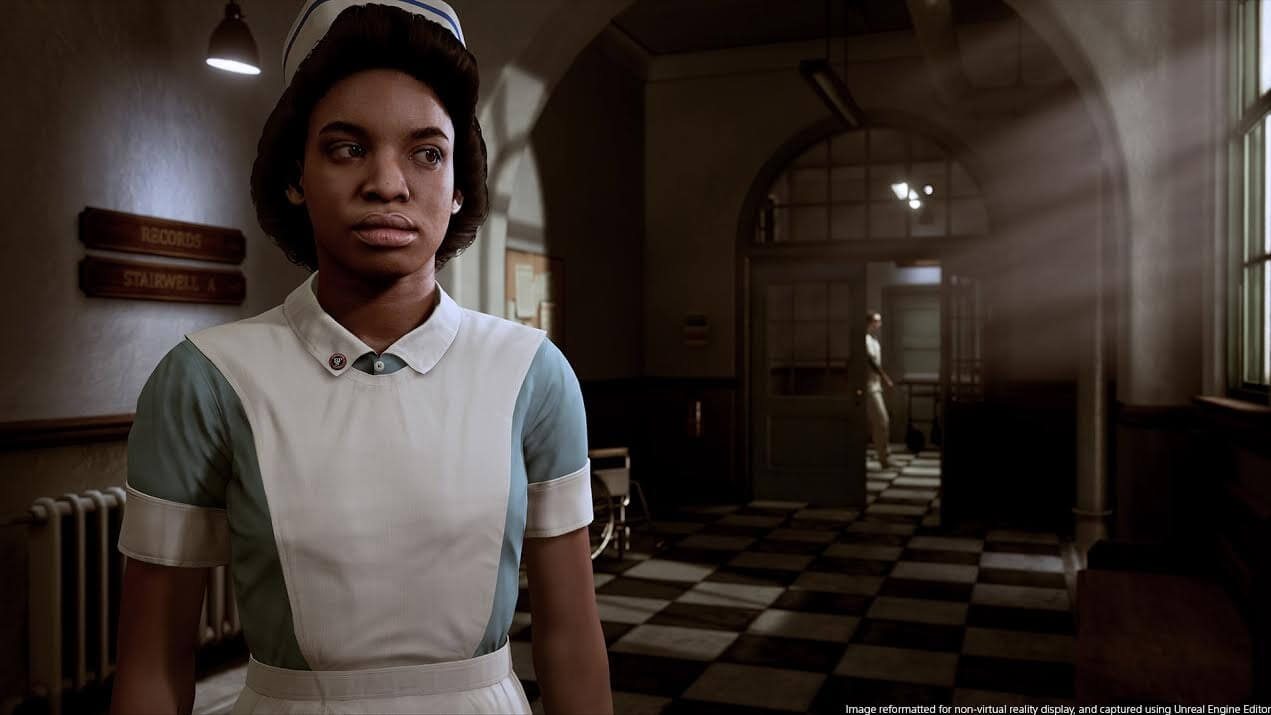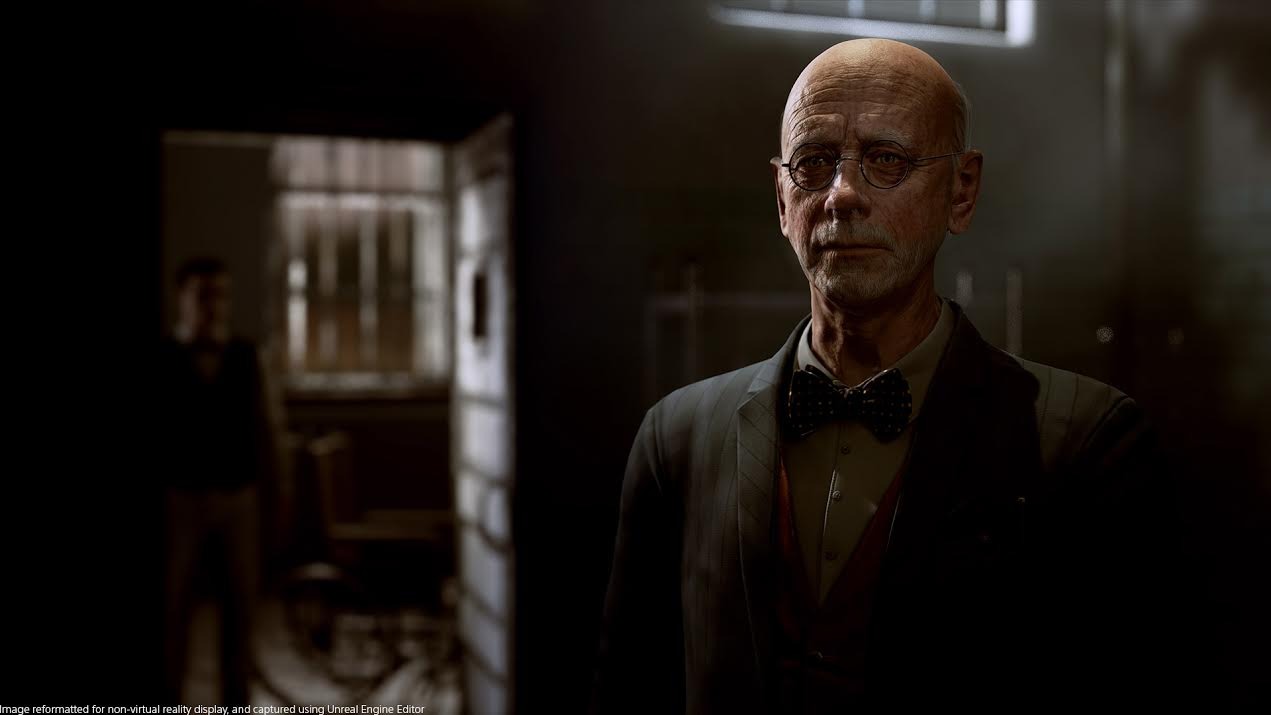Prequels run the risk of diminishing the magic of the stories they lead into, but The Inpatient is a rare exception that entirely manages to avoid that. As opposed to its jumpscare-obsessed peers on PSVR–even in opposition to the game from which it spun off, Until Dawn–The Inpatient relies less on the element of surprise, instead utilizing the far more diabolical and harder-won asset of dread.
You play as an amnesiac–the gender and skin color of whom you can choose at the outset–at the illustrious Blackwood Sanitorium and Hotel. You wake in a wheelchair on a snowy February day in 1952, a doctor gently but ominously grilling you about your fleeting scraps of memory. After the first session leaves your curiosity hanging with more questions than answers, you’re carted off to your room. There, nothing but your paranoid roommate, a hard-looking bed, and a steady supply of flimsy sandwiches awaits you each day, and vicious, gory, absinthe green-tinted nightmares await every night.









You’ll be shuffling your way through The Inpatient’s various unpleasantries using either a DualShock 4 or two Playstation Move controllers. Unlike playing with a DualShock, Move controllers enhance your immersion–giving you two functional onscreen hands to use–but collision detection is on the buggy side, where the hands can get very easily stuck on random objects while trying to interact with them and twist in weird ways. In addition, movement is a bit clunky; the quick-turning radius makes it far too easy to get stuck in a doorway because your virtual shoulder happens to be at a strange angle, which is especially awkward when you’re not able to step out of the way of a scripted event in time. Lastly, no matter which control scheme you pick, the game is in desperate need of the ability to walk backwards.
You have ample time to pace around your dingy room getting used to the controls, but just as you begin to settle into your new routine, the day comes when the nurse stops paying a visit, the food stops arriving, and a chilling daily chorus of ungodly shrieks and screams from deep in the sanitorium starts taking the place of actual human conversations.
Survivors of Until Dawn can already take a wild guess at what’s happening outside the door, but The Inpatient isn’t so quick to jump to that conclusion. Instead of introducing its antagonist upfront, half the game is spent dealing with a far more human monster: starvation. The slow decay of sanity is executed with a steady hand; every time you wake up from an extended slumber brings a new level of deterioration to the room and your roommate. Add in the amnesia, and you’re trapped in your own personal hell long before the physical devils actually start showing up.
Eventually, of course, they do, and The Inpatient’s second half settles into a familiar, exploratory groove of wandering the pitch black hallways of an asylum, waiting for just about anything to come for your blood. The game loses some of its intrigue around this point, but certainly not all. A more deep-seated terror gives way to external horror, as The Inpatient’s incredible, all-encompassing soundscape echoes all sorts of grisly happenings from god-knows-where in the sanitorium. It’s chilling enough until you realize the sounds are happening closer than you thought, and then it’s maddening. It all culminates in a specific setpiece involving a careful, pins-and-needles walk from the sanitorium to a nearby chapel. A certain red-light-green-light challenge from Until Dawn gets a retread here, but the addition of VR to the mix makes an already pulse-raising situation even more frightening.









The game does lose a bit of steam as it glides towards the ending, but its short length–around two hours if you’re not thoroughly looking for secrets–means the less interesting bits don’t overstay their welcome. Where The Inpatient gains depth isn’t necessarily from the endgame, but the replayability. It’s possible to plow through the entire game, get a perfectly satisfactory ending, and have multiple questions still dangling in the air by the end, answered only by the second or third go round. Until Dawn’s Butterfly Effect branching path system makes a return here, with the added bonus of an option to use voice recognition, to literally speak for your in-game character. It comes off at the outset as a neat gimmick, but it’s hard not to find yourself getting deep into character, following the onscreen emotional cues, bitterly spitting dialogue at NPCs, and making deeply personal choices. By proxy, much of what you get from the game stems less from „what does this choice do?“ than „how do I play this role to get the answers I want?“
The Inpatient doesn’t just do right by Until Dawn, but stands right alongside it as one of the strongest horror experiences on PlayStation 4. It’s a game far less concerned with pushing you towards what’s lurking down every corridor than feeding you the worst ideas of what could be.
Website: LINK
Schreibe einen Kommentar
Du musst angemeldet sein, um einen Kommentar abzugeben.